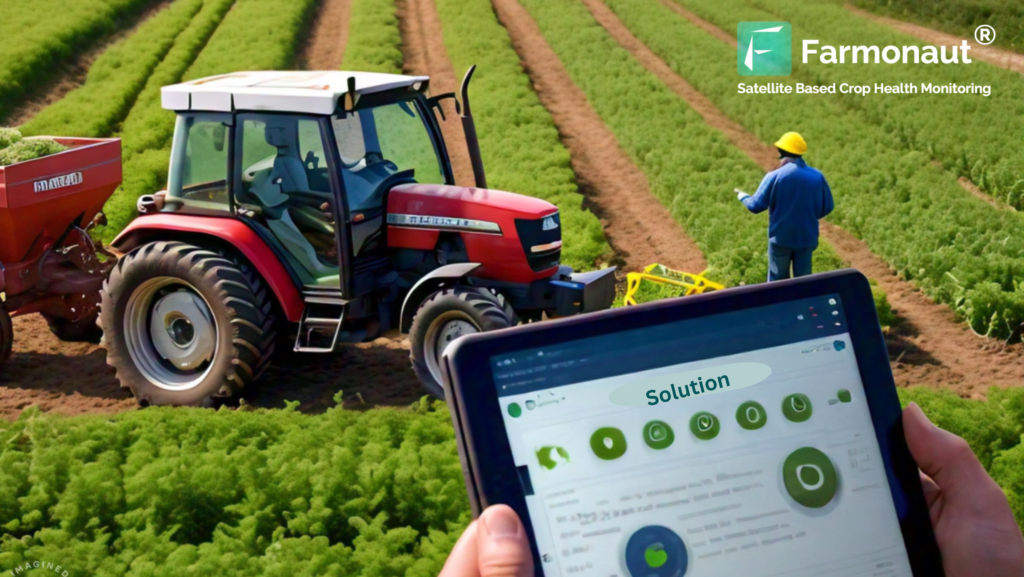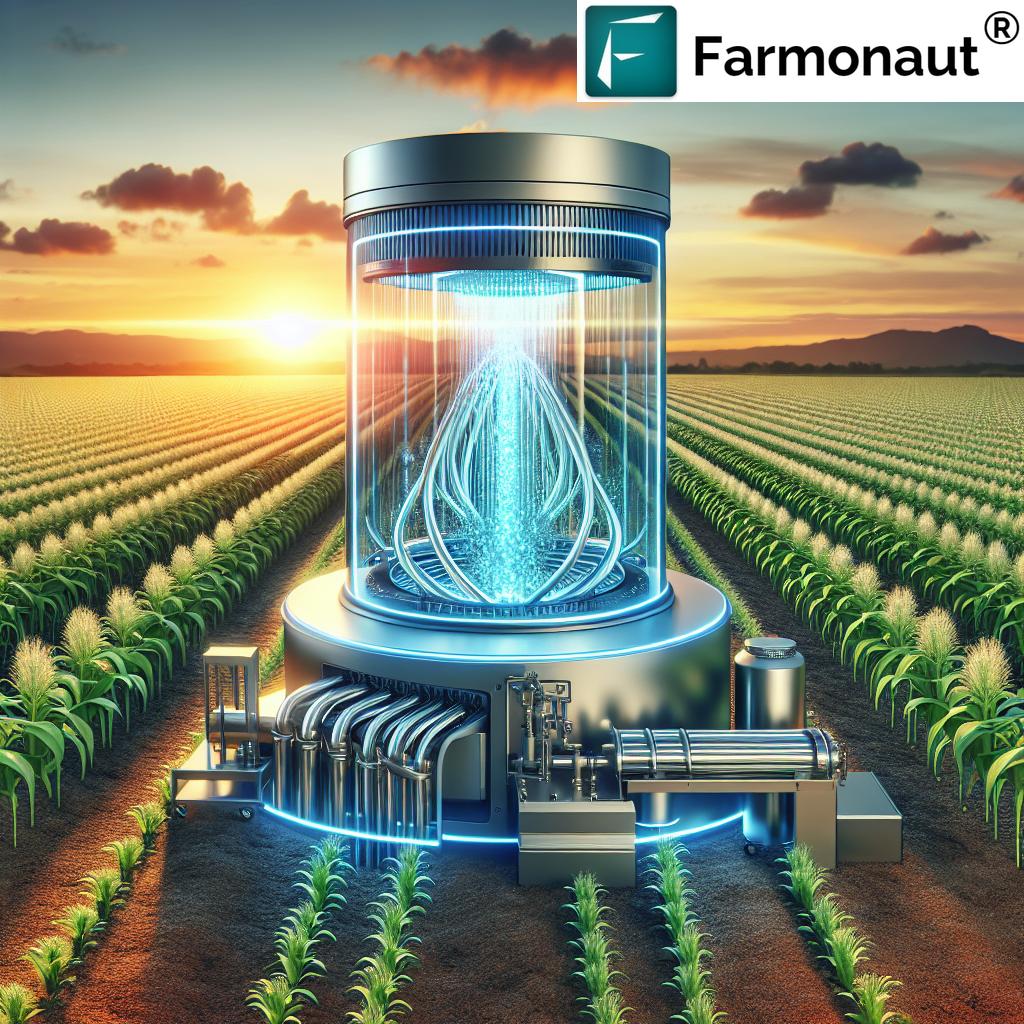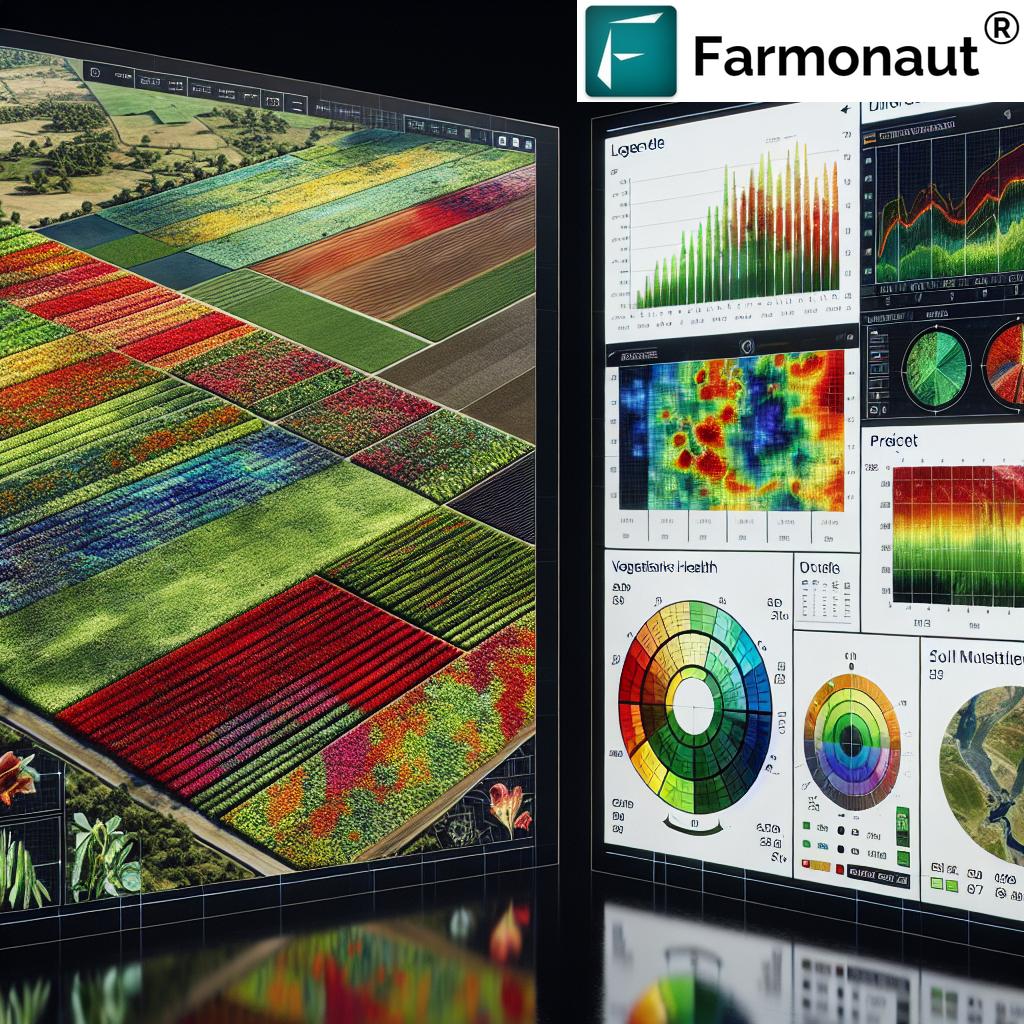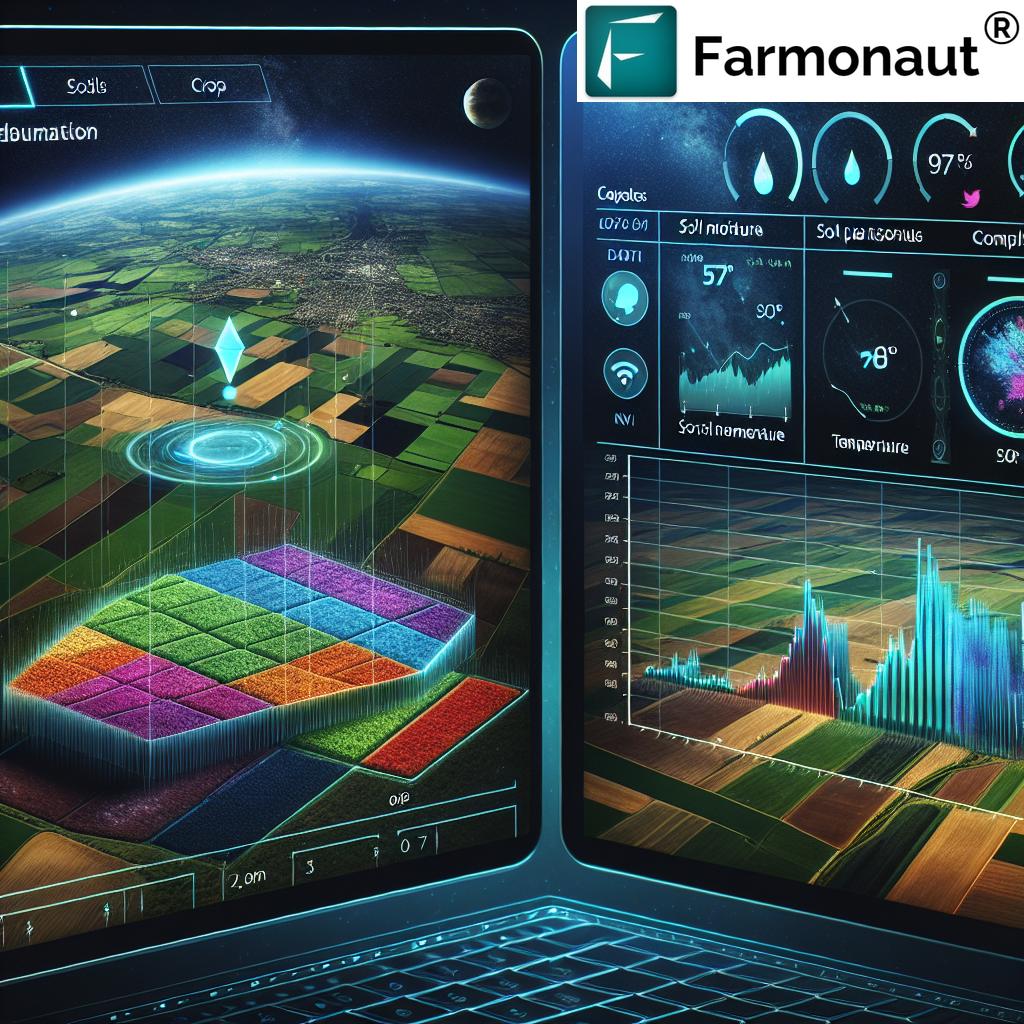Revolutionizing Iowa Farms: How Tile-Crawling Robots Are Enhancing Precision Agriculture and Water Quality Management
“Tile-crawling robots can monitor nitrate levels in farm drainage systems, potentially impacting 12.8 million acres of tile-drained farmland in Iowa.”
We are on the cusp of a revolutionary transformation in precision agriculture technology, and it’s happening right here in the heartland of America. Iowa, known for its vast cornfields and rich agricultural heritage, is now at the forefront of an exciting innovation that promises to reshape how we manage our farms and protect our precious water resources. In this blog post, we’ll explore the groundbreaking development of tile-crawling robots designed to monitor nitrate levels in farm drainage systems, and how this smart farming solution is set to optimize crop productivity while addressing critical environmental concerns.
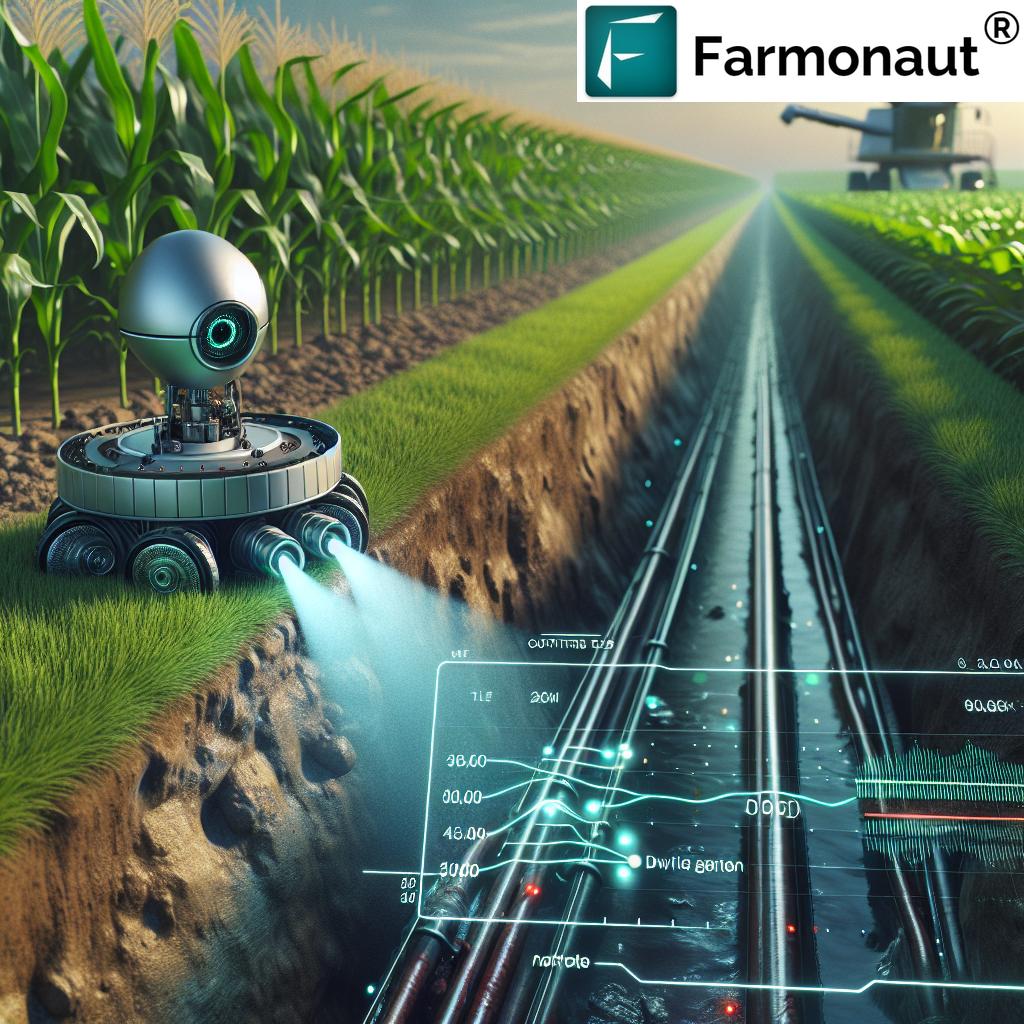
The Challenge: Balancing Productivity and Environmental Stewardship
Iowa’s agricultural sector faces a unique challenge. While tile drainage systems are essential for boosting crop productivity in the state’s rich but often waterlogged soils, they have also been identified as potential conduits for excessive nitrates and nutrients to flow downstream. This runoff can contribute to significant water quality issues, creating a tension between agricultural productivity and environmental conservation.
According to the latest agricultural census data, nearly half of Iowa’s cropland utilizes tile drainage systems. These underground networks of pipes are crucial for managing soil moisture levels and improving field conditions for planting and harvesting. However, the same systems that make Iowa’s fields some of the most productive in the nation also pose a risk to water quality in rivers, streams, and even the Gulf of Mexico.
Enter the Tile-Crawling Robot: A Precision Agriculture Game-Changer
Recognizing the need for innovative solutions, researchers at Iowa State University (ISU) and Michigan State University have joined forces to develop a revolutionary tile-crawling robot. This cutting-edge technology aims to provide farmers with precise data about nitrate fertilizer loss, enabling them to make informed decisions that benefit both their crop production and the environment.
- Advanced Sensors: The robot is equipped with state-of-the-art nitrate sensors capable of detecting the timing, location, and quantity of nitrate loss from fields.
- Microelectronics: Compact and efficient microelectronic components allow the robot to process and transmit data in real-time.
- Robotics: The innovative design enables the robot to navigate through tile drainage systems autonomously.
This combination of technologies represents a significant leap forward in agricultural robotics and precision farming techniques. By integrating these advanced tools, farmers can adopt a more targeted approach to soil nutrient management, potentially reducing the environmental impact of fertilizers while maintaining or even improving crop yields.
The Technology Behind the Innovation
At the heart of this groundbreaking project is a novel nitrate sensor developed by Liang Dong, director of ISU’s microelectronics research center. This sensor is not just a technological marvel; it’s being designed with affordability in mind, ensuring that it can be widely adopted by farmers across Iowa and beyond.
The vision for the final product is truly exciting:
- A compact, cost-effective nitrate sensor
- An integrated camera for visual inspection of tile conditions
- A waterflow sensor to measure drainage rates
- All components mounted on a mobile robot capable of traversing tile drainage systems
This combination of technologies will allow the robot to collect vital information about nutrient loss and the overall health of the drainage system, providing farmers with unprecedented insights into their fields.
The Prototype: A Glimpse into the Future of Farming
While still in the prototype stage, the tile-crawling robot is already showing immense promise. Developed by Xiaobo Tan, a professor of electrical engineering at Michigan State University, the current version is approximately two feet long and uses fin-like barbs to navigate through corrugated pipes.
Graduate research student Christian Luedtke has been instrumental in showcasing the prototype during virtual presentations. Through this process, the team has gained valuable insights into the diverse nature of tile infrastructure across different farms. They’ve discovered that tiles can vary widely in material and diameter, presenting additional engineering challenges that need to be addressed.

Overcoming Challenges: Collaboration is Key
The development of this innovative technology hasn’t been without its hurdles. Luedtke and his team quickly realized that understanding the specific configurations of tile drainage systems was a crucial learning curve. This experience has highlighted the importance of close collaboration with farmers to ensure that the final product meets real-world needs and can function effectively in diverse tile environments.
Currently, the team is focused on enhancing the robot’s efficiency. Their goals include:
- Increasing the robot’s speed through pipes
- Extending battery life to several hours
- Ensuring complete waterproofing for reliable operation in wet conditions
These improvements are essential for creating a practical tool that can be deployed across Iowa’s vast network of tile-drained fields.
“Smart farming robots combining sensors, microelectronics, and robotics could help reduce the 1.2 million metric tons of nitrogen fertilizer used annually in Iowa.”
The Bigger Picture: Improving Iowa’s Water Quality
The ultimate goal of this research extends far beyond technological innovation. By offering farmers an affordable and practical solution for monitoring nutrient loss, the project aims to contribute significantly to improving Iowa’s water quality. With more informed decision-making, farmers can optimize their fertilizer use, reducing runoff while maintaining or even improving crop yields.
This technology could be a game-changer for addressing pressing water quality concerns in the region. By providing real-time data on nitrate levels in drainage systems, farmers can:
- Adjust fertilizer application rates and timing
- Implement targeted conservation practices
- Contribute to broader efforts to reduce nutrient pollution in waterways
The potential impact of this technology on both agricultural productivity and environmental sustainability cannot be overstated.
Precision Agriculture: A New Era for Iowa Farms
The development of tile-crawling robots represents a significant advancement in precision agriculture technology. By providing farmers with detailed, site-specific data about their fields, this innovation enables a level of precision in farm management that was previously unattainable.
Here’s how this technology is set to transform farming practices in Iowa:
- Targeted Fertilizer Application: With precise data on nitrate levels and loss patterns, farmers can apply fertilizers more efficiently, reducing waste and environmental impact.
- Improved Water Management: Understanding water flow and nutrient content in drainage systems allows for better irrigation and drainage practices.
- Enhanced Soil Health: By optimizing nutrient application, farmers can improve soil health and fertility over time.
- Increased Crop Productivity: More efficient use of resources and better field management can lead to improved crop yields.
- Environmental Stewardship: Reducing nutrient runoff helps protect local waterways and contributes to broader conservation efforts.
This level of precision in agricultural practices not only benefits individual farmers but also contributes to the overall sustainability of Iowa’s agricultural sector.
The Role of Agricultural Robotics in Modern Farming
The tile-crawling robot is just one example of how agricultural robotics are revolutionizing farming practices. As technology continues to evolve, we’re seeing an increasing integration of robotics in various aspects of agriculture, from planting and harvesting to monitoring and management.
Some key benefits of agricultural robotics include:
- Increased efficiency and productivity
- Reduced labor costs
- Improved accuracy in task execution
- Enhanced data collection and analysis capabilities
- Ability to operate in conditions that may be challenging for human workers
As these technologies become more sophisticated and accessible, we can expect to see widespread adoption across farms of all sizes, leading to a more efficient and sustainable agricultural sector.
The Future of Water Quality Management in Farming
The development of tile-crawling robots is not just about improving farm productivity; it’s also a significant step forward in water quality management. By providing detailed data on nitrate levels in drainage systems, this technology enables farmers to take a proactive approach to managing nutrient runoff.
Future developments in this area could include:
- Integration with other farm management systems for comprehensive data analysis
- Real-time alerts for excessive nutrient loss
- Predictive modeling for optimal fertilizer application
- Automated adjustment of drainage systems based on collected data
These advancements could lead to a significant reduction in nutrient pollution in waterways, benefiting both local ecosystems and downstream communities.
Comparison: Traditional Farming vs. Tile-Crawling Robot Technology
| Aspect | Traditional Farming Method | Tile-Crawling Robot Method | Estimated Improvement (%) |
|---|---|---|---|
| Nitrate level monitoring frequency | Infrequent, manual sampling | Continuous, automated monitoring | 200% |
| Precision of nutrient loss data | Low, based on estimates | High, real-time accurate measurements | 150% |
| Water quality assessment accuracy | Moderate, based on periodic testing | High, continuous monitoring | 100% |
| Fertilizer application efficiency | Based on general recommendations | Tailored to specific field conditions | 30% |
| Environmental impact reduction | Limited by lack of precise data | Significant, due to targeted interventions | 40% |
| Overall farm productivity | Standard yields | Potential for increased yields | 15% |
This comparison clearly illustrates the potential benefits of implementing tile-crawling robot technology in Iowa farms. The significant improvements in monitoring frequency, data precision, and application efficiency could lead to substantial gains in both productivity and environmental stewardship.
The Role of Technology Providers in Modern Agriculture
As we witness this technological revolution in agriculture, it’s important to recognize the role of innovative technology providers in making these advancements accessible to farmers. Companies like Farmonaut are at the forefront of this transformation, offering cutting-edge solutions that complement and enhance the capabilities of technologies like tile-crawling robots.
Farmonaut provides advanced, satellite-based farm management solutions that can be accessed via Android, iOS, web/browser apps, and API. These tools offer valuable services such as:
- Real-time crop health monitoring
- AI-based advisory systems
- Blockchain-based traceability
- Resource management tools
By integrating these technologies with innovations like tile-crawling robots, farmers can gain a comprehensive view of their operations, from underground drainage systems to satellite-derived vegetation health indices.
For those interested in exploring these advanced agricultural technologies, Farmonaut offers several ways to get started:
For developers interested in integrating Farmonaut’s satellite and weather data into their own systems, the company also offers API access:
Conclusion: A Bright Future for Iowa Agriculture
The development of tile-crawling robots for nitrate monitoring represents a significant milestone in the evolution of precision agriculture and water quality management. This innovative technology, combined with other advanced farming solutions, has the potential to transform Iowa’s agricultural landscape, promoting both productivity and sustainability.
As we look to the future, it’s clear that the integration of robotics, AI, and data-driven insights will play a crucial role in addressing the complex challenges facing modern agriculture. By embracing these technologies, Iowa farmers can lead the way in sustainable farming practices, ensuring the long-term health of their lands and waterways while continuing to feed the world.
The journey towards more sustainable and efficient farming practices is ongoing, and innovations like the tile-crawling robot are just the beginning. As research continues and technologies evolve, we can expect to see even more groundbreaking solutions that will help farmers meet the growing demand for food while protecting our precious natural resources.
FAQs
- Q: How does the tile-crawling robot work?
A: The robot uses fin-like barbs to move through tile drainage pipes, equipped with sensors to detect nitrate levels, a camera for visual inspection, and a waterflow sensor to measure drainage rates. - Q: What are the main benefits of using this technology?
A: The main benefits include more precise nutrient management, improved water quality, increased crop productivity, and better environmental stewardship. - Q: Is this technology currently available for farmers?
A: The technology is still in the prototype stage and undergoing development and testing. It’s not yet commercially available. - Q: How will this technology impact water quality in Iowa?
A: By providing precise data on nitrate levels in drainage systems, farmers can better manage fertilizer application, potentially reducing nutrient runoff into waterways and improving overall water quality. - Q: Can this technology be used in other states or countries?
A: While currently being developed for Iowa farms, the technology could potentially be adapted for use in other regions with tile drainage systems.





